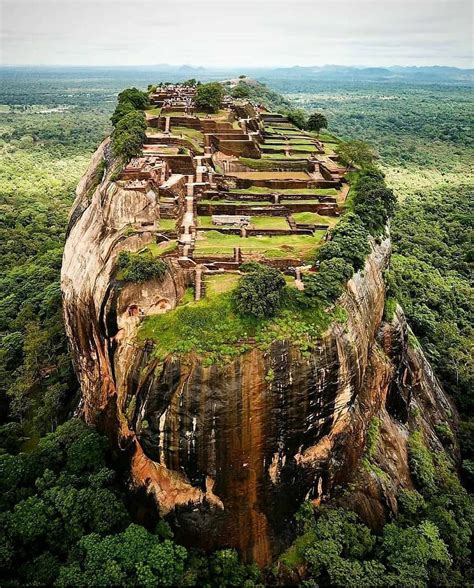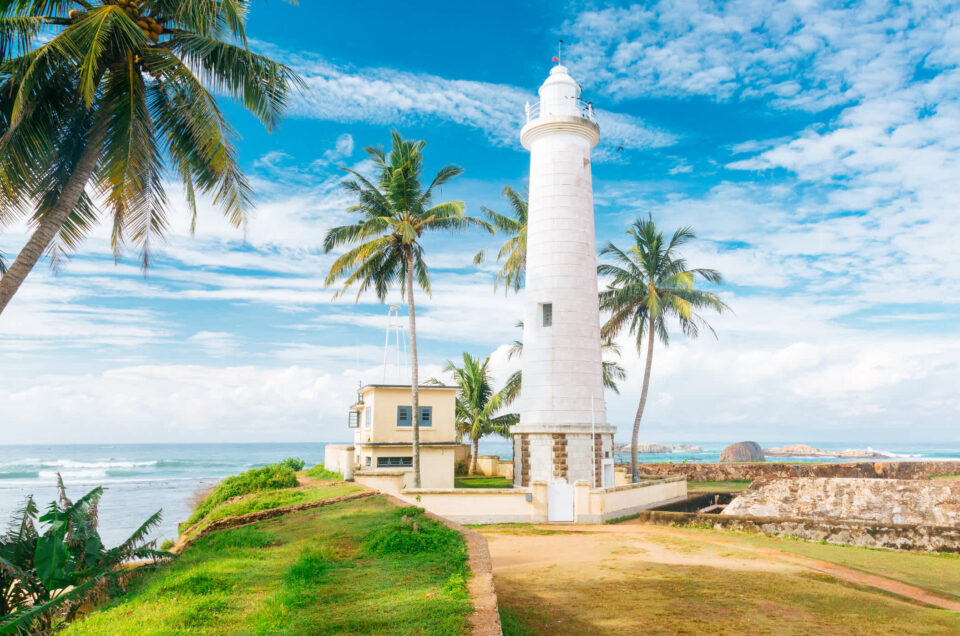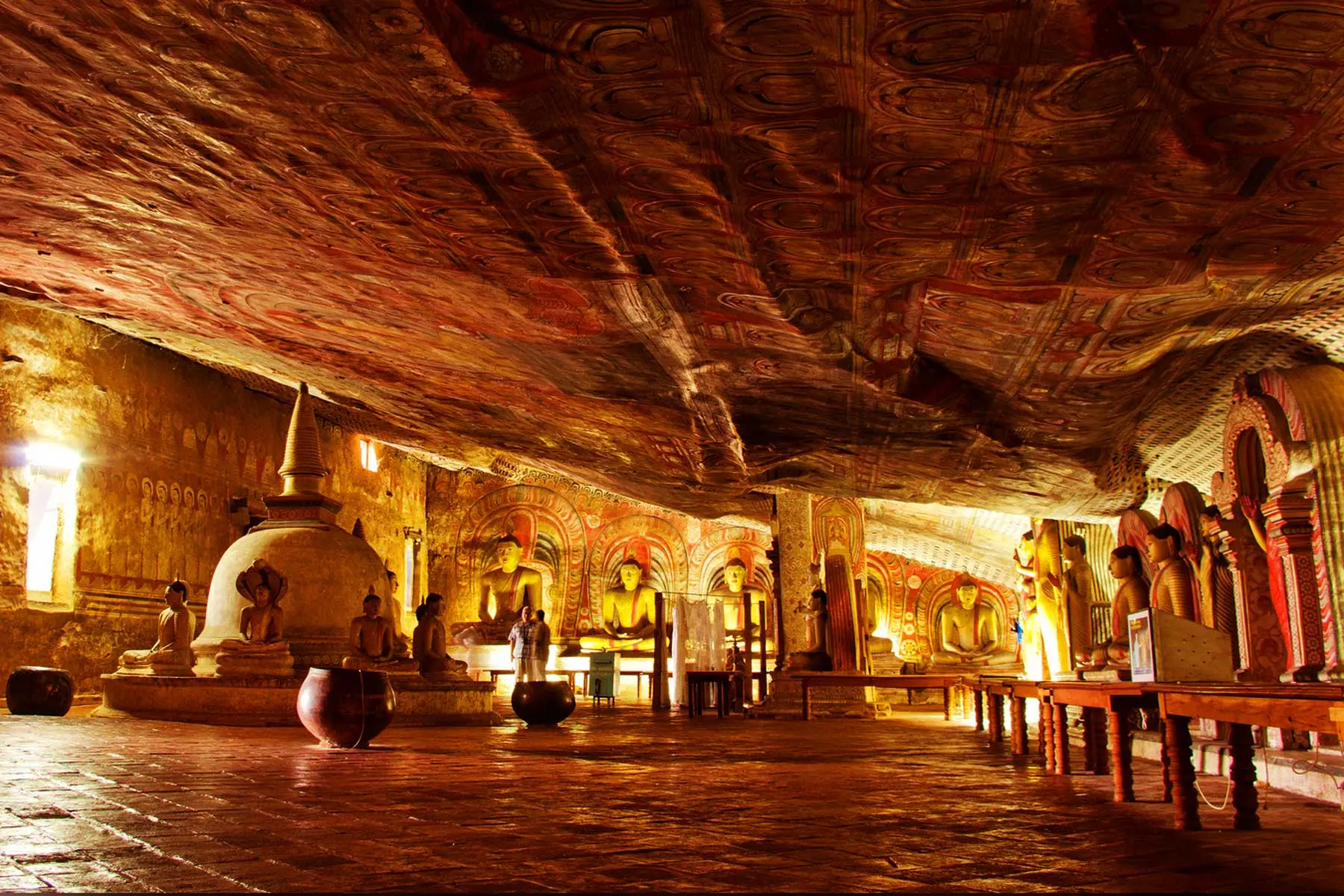
Nestled in the heart of Sri Lanka, the Dambulla Cave Temple—also known as the Golden Temple of Dambulla—is a testament to the island’s rich cultural and religious heritage. This UNESCO World Heritage Site stands majestically atop a 160-meter-high rock, offering visitors a glimpse into over two millennia of history and art.
This temple complex dates back to the first century BCE. This is the most notable cave temple in sri lanka. It has five caves, carved with a drip line to keep the interiors dry. Inside the ceilings of the caves there are colourful religious images as well as those of various gods and goddesses. There are images of the Lord Buddha and bodhisattvas. The caves, built at the base of a 150m high rock during the Anuradhapura and Polonnaruwa era. Names of the five caves – Devaraja Lena, Maharaja Lena, Maha Alut Viharaya, Paccima Viharaya, Devana Alut Viharaya.
visitors can reach the rock temple through four entrances; 2 entrances from kandy road (A-9), other from the kurunegala dambulla road (A-6), and the fourth from the valagamba pirivena. Each one of those routes to the rock temple are long granite steps therefore that it is recommended to climb there in morning hours or in the evening. Foreign visitors will have to purchase entrance ticket from the office at the entrance near the golden temple.
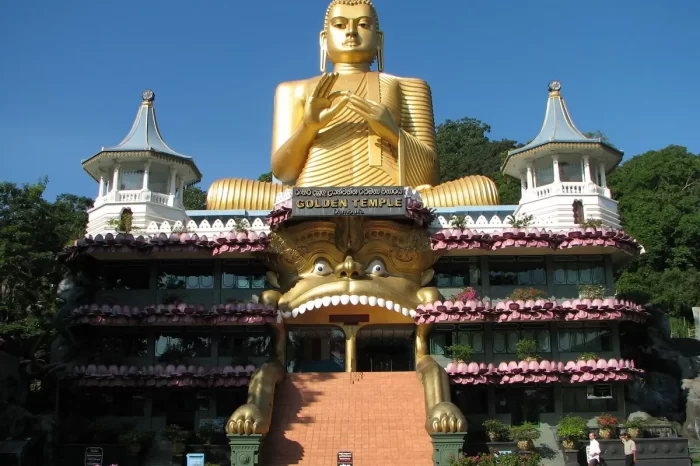
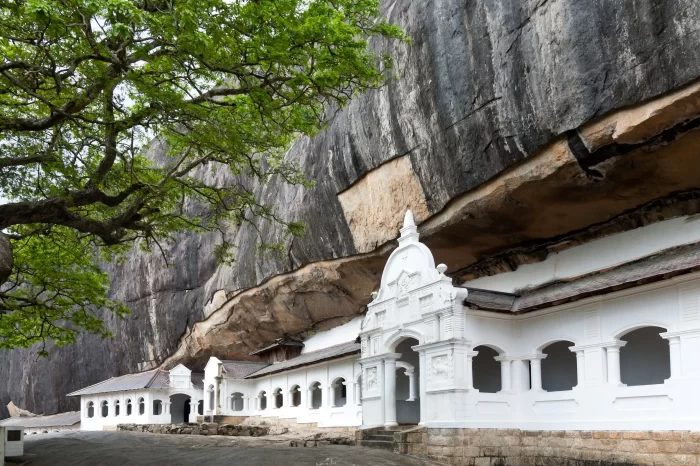
Historical Significance
The origins of the Dambulla Cave Temple date back to the 1st century BCE. Legend has it that King Valagamba, seeking refuge from invading forces, found sanctuary within these caves. Upon reclaiming his throne, he transformed the caves into a magnificent temple complex as an expression of gratitude. Over the centuries, successive monarchs have contributed to its expansion and preservation, resulting in the awe-inspiring site we witness today.
Architectural Marvels
The temple complex comprises five primary caves, each adorned with intricate murals and statues that narrate the life and teachings of Lord Buddha. In total, there are 153 Buddha statues, along with depictions of deities and ancient kings. The ceilings and walls are covered with vibrant frescoes, showcasing scenes from Buddhist mythology and historical events.
Cave Highlights
Cave of the Divine King (Devaraja Lena): This cave houses a 14-meter-long reclining Buddha statue, symbolizing the Buddha’s attainment of Nirvana.
Cave of the Great Kings (Maharaja Lena): Featuring statues of two prominent kings alongside numerous Buddha images, this cave reflects the royal patronage that sustained the temple’s development.
Great New Monastery (Maha Alut Viharaya): Renowned for its vibrant murals, this cave was refurbished during the 18th century under the Kandyan kings, adding a layer of artistic richness to the complex.

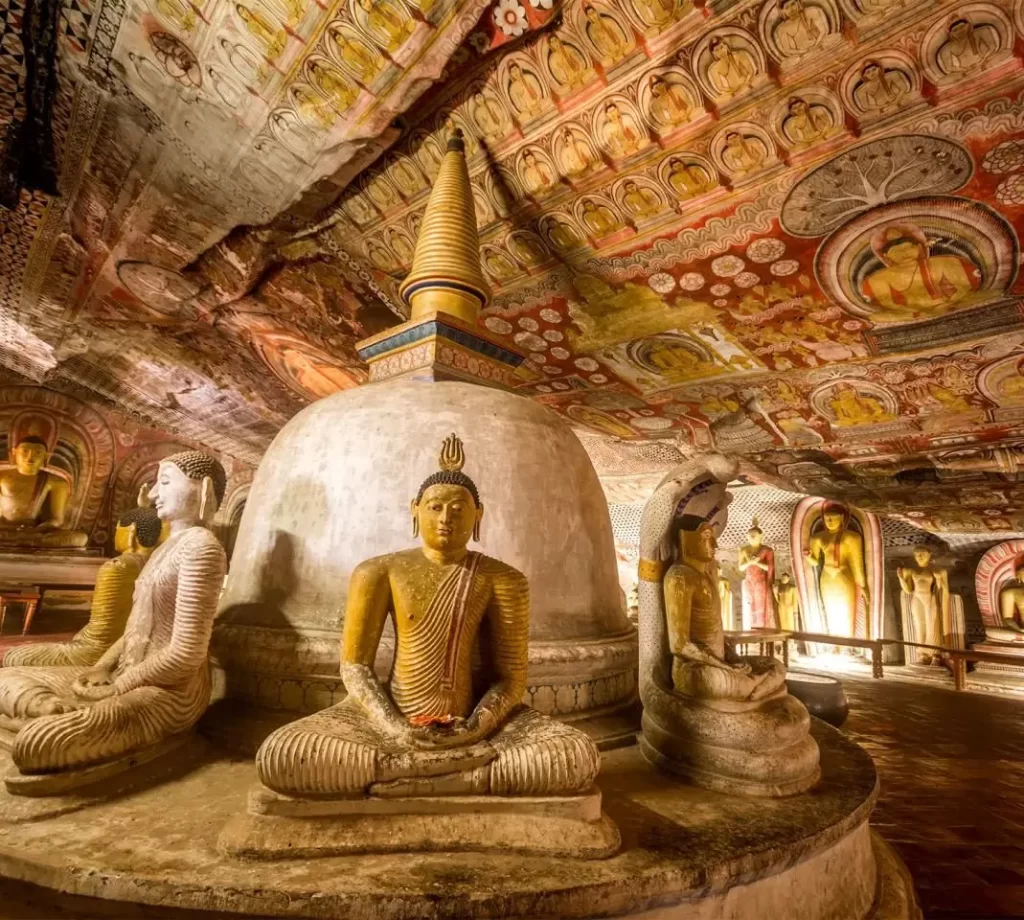
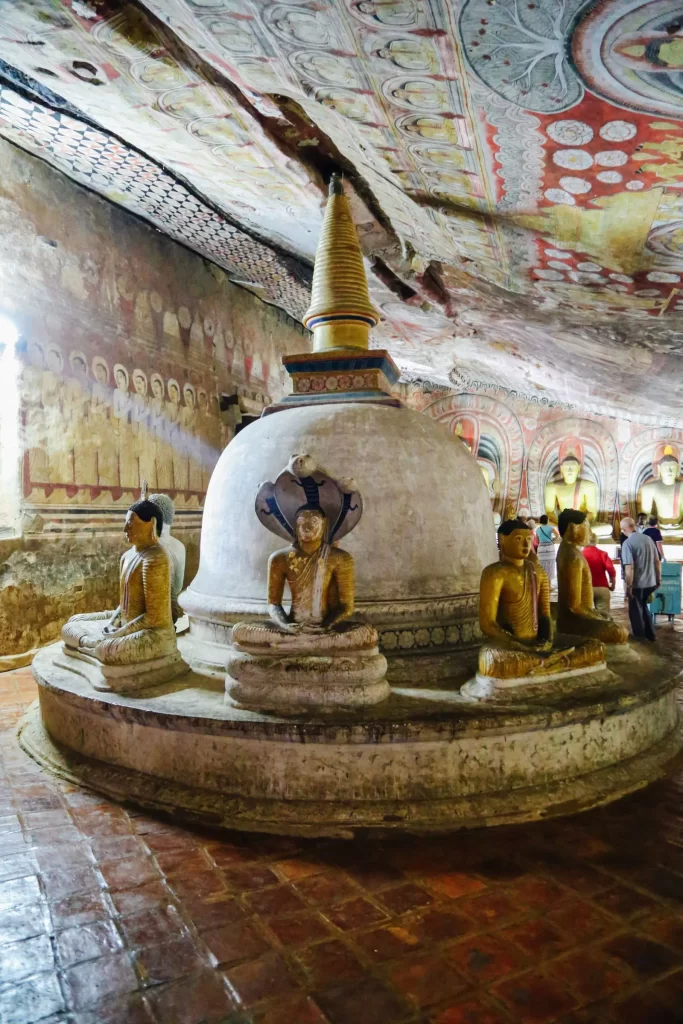
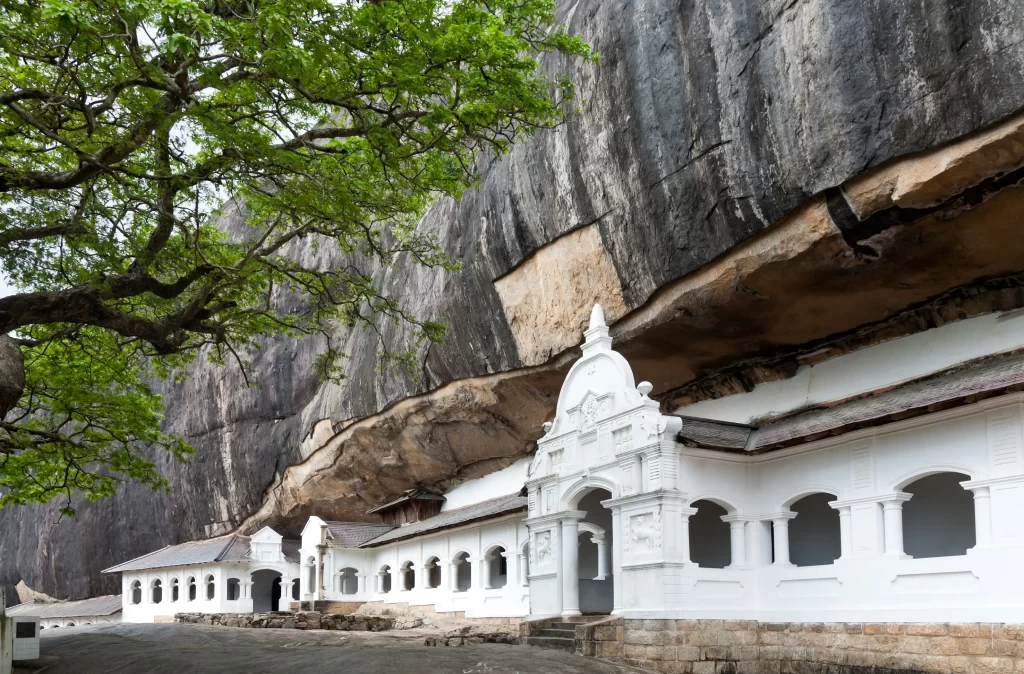





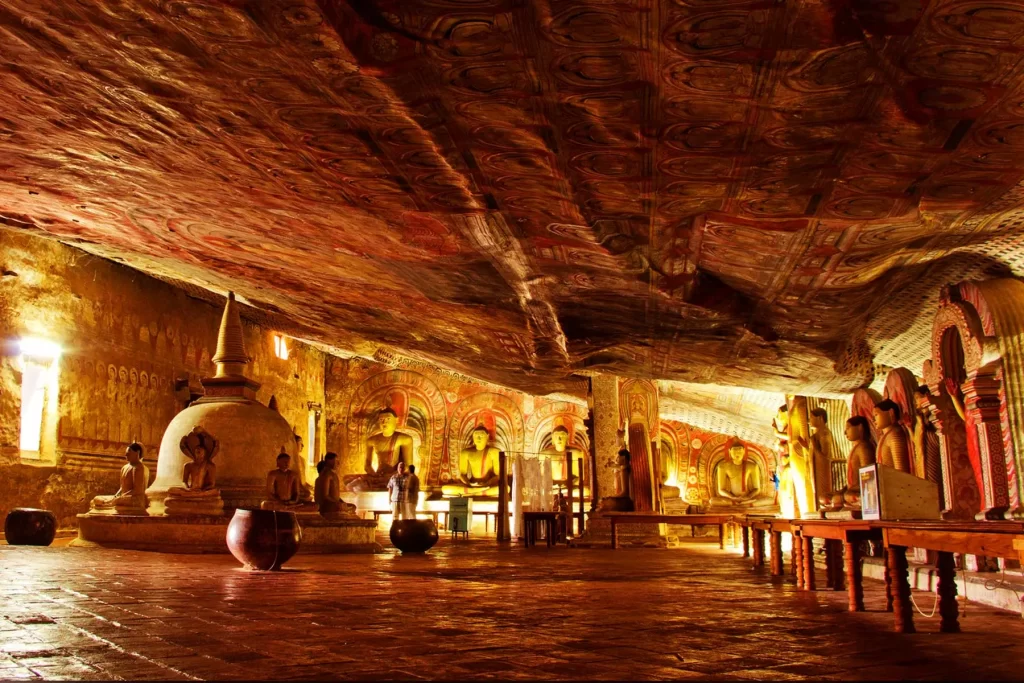
Educational Insights
Artistic Heritage: An opportunity to study ancient Sri Lankan art, including frescoes and sculptures that have been preserved for over 2,000 years.
Cultural Significance: Insights into the spread of Buddhism in Southeast Asia and the role of monastic sites in cultural preservation.
Architectural Techniques: Understanding the methods employed in carving and decorating rock cave temples during ancient times.
Travel Tips with Ditto Travels
Best Time to Visit: The ideal period to explore Dambulla is between January and April, characterized by pleasant weather conducive to sightseeing.
Attire: As a sacred site, visitors are advised to dress modestly, covering shoulders and knees, to show respect for the religious environment.
Guided Tours: Engaging a knowledgeable guide can enhance the experience, providing deeper insights into the temple’s history and artistry.

